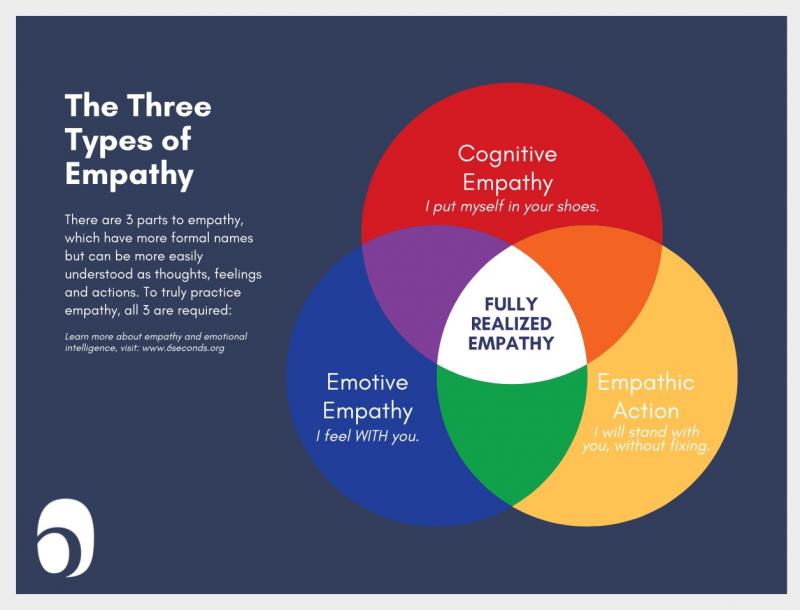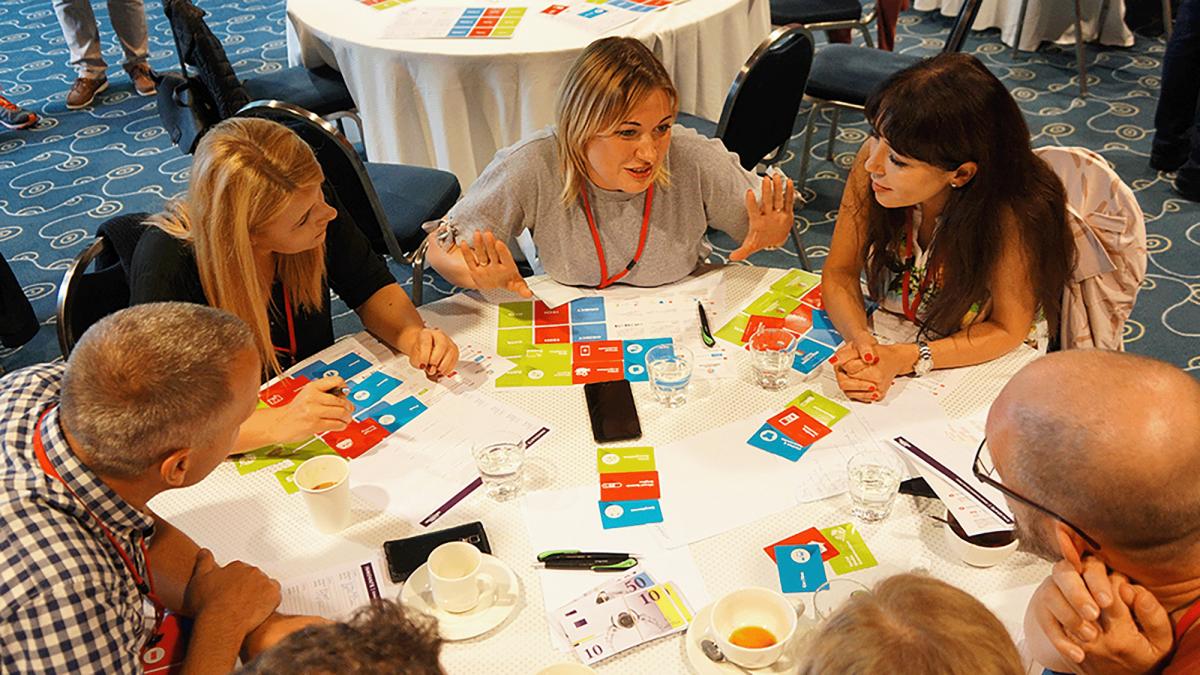Empathic ability almost everyone claims to have it, but almost no one knows what it is exactly. It is about understanding the thoughts and feelings of others that much is known. But what else is involved in empathy? And, more importantly: how can we increase our capacity for empathy?
What is Empathy?
According to Standford psychology professor Jamil Zaki, PhD, "Empathy is a simple word for a complex concept. Research psychologists see empathy as an umbrella term for the different ways we respond to the emotions of others." It sounds quite cryptic, but if we expose the three different parts of empathy, it becomes much more alive.
1. Cognitive empathy
Cognitive empathy is the ability to understand the perspective, thoughts and feelings of others. It concerns the 'thinking part' of empathy and occurs in the cognitive area. Putting yourself in the shoes of others is a common example of this first step in empathy.
2. Emotional empathy
The continuation can be found in sympathizing with others, in other words, emotional empathy. At this level, neurons are released when we see the emotions of others as if they were our own. So, we do not think on a cognitive level that someone else is sad; we feel the sadness ourselves.
3. Empathetic action
Finally, there is the action. Is anyone sad? Then, we look at how we can help so that the person feels better. This can be done in various ways, such as asking what someone needs or sitting in silence with someone without doing anything.

Empathy explained by Simon Sinek
Why is empathy important?
Empathy helps us to come closer to each other. It helps you understand someone from a different background, culture or ideology. It also ensures a better connection with your colleagues, friends or family. Dr Zaki indicates in a Ted Talk that not only other people benefit from empathy, but also you: "People who experience empathy also tend to be less stressed and depressed, more satisfied with their lives, happier in their relationships, and more successful at work.” So, there is every reason to work on greater empathy yourself. But how?
How do you get started with empathy yourself? 5 exercises
We all have a responsibility to take care of our bodies and our mental health. But why not also spend time on your social health and make empathy part of this? The 5 exercises below will strengthen your empathic ability.
Exercise 1: Strengthen self-compassion
In this exercise, you think about something you are struggling with and how it makes you feel. Then, imagine a friend coming to you with the same problem and think about how you would respond. This can highlight the difference between the kindness we show to the people in our lives and the kindness (or lack thereof) we show to ourselves. You'll likely find a significant difference in how you would treat your friend - probably with patience, generosity, and forgiveness - compared to how you would respond to yourself - perhaps with self-blame, severity, and self-criticism. By building self-compassion, we increase our capacity for empathy.
Exercise 2: Do you feel exhausted? Be kind to others.
At some point in the day, especially when you're stressed or feeling on a very short fuse, you give in some small way - whether it's time, energy or money - to someone in your life. Send a thoughtful message to someone who is going through a hard time. Get your partner's favourite coffee while you run errands. Carry an elderly neighbour's groceries upstairs. “Building empathy isn't necessarily about donating half your salary to charity. It's about the little things we do daily,” says Dr. Zaki. “It's about habits of mind.”
Empathy is a superpower. I always default to "what's in their mind, how does it affect them?" it's made me a good communicator/ salesman/ sibling/ leader… but most of all… it's made me kind.
Gary Vaynerchuk
Exercise 3: Agree to disagree
Have a conversation with someone you disagree with. But instead of debating or discussing the controversial topic, share how you came to your opinion and listen to how the other person came to his or her opinion. This can be the most uncomfortable exercise, but it is worth it. You are especially considering our current social climate, where a person's ideology can be equated with their personality.
Exercise 4: Use technology to connect, not just like and comment
This exercise will have you thinking about how you use your phone and reconsidering how you can use it differently. “Try to see technology as a medium in which human connection can exist and in which you can achieve that connection,” says Dr. Zaki. We often pick up our phone and only realize an hour later that we've been scrolling and clicking aimlessly. This exercise is not intended to build empathy but to help us bring kindness and humanity to the online platforms where we spend much of our time.
Exercise 5: Appreciate empathy from others
Just as we are programmed to compliment other people for a good style choice or performance at work, Let's make it a habit to appreciate empathetic behaviour when we see it. In meetings – both online and in person – take a moment to recognize the people on your team when they help others achieve their goals. “Much of our attention goes to the loudest voices, which are not necessarily the friendliest,” notes Dr. Zaki up. “When we see the good around us, we balance our attention.”
Conclusion
I challenge you to try one of the above exercises yourself. No matter which one you choose, the order above is random. If you've tried this, chances are you'll try the rest, too, and perhaps integrate it into your daily life. And then we come to the closing quote from Simek Sinek that captures the essence: "Leaders shout not focus on being in charge; it is about taking care of those in our charge."





